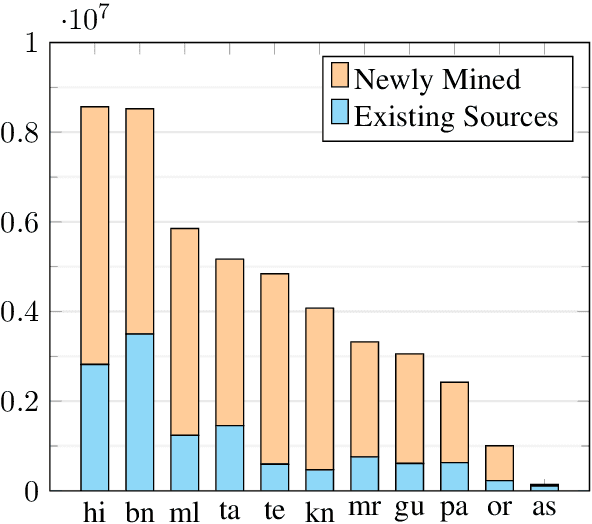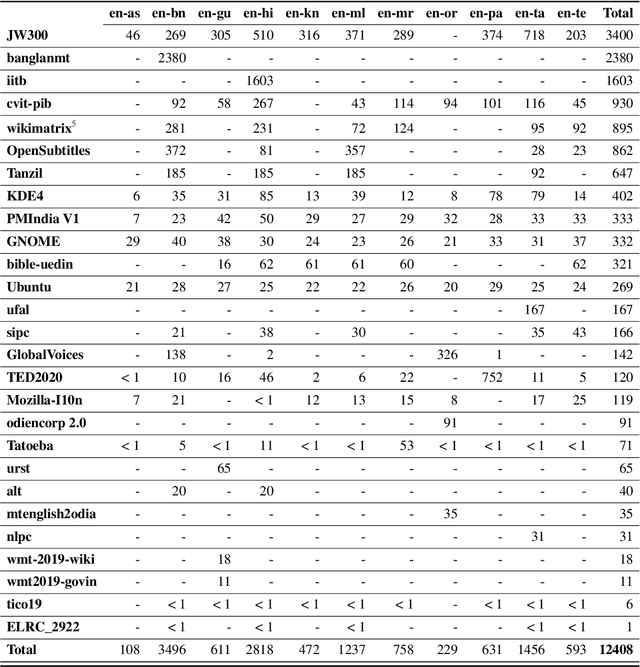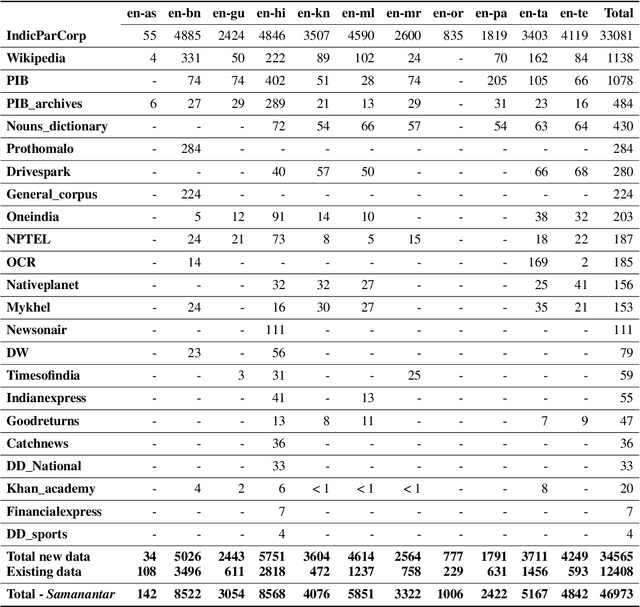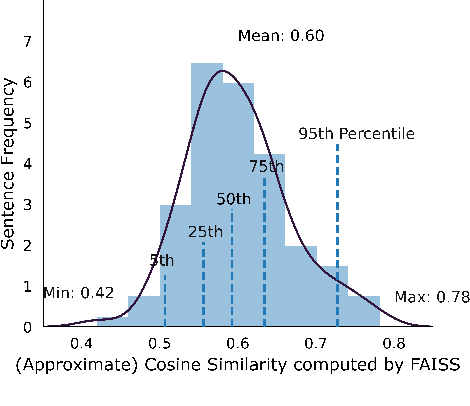Raghavan AK
IndicTrans2: Towards High-Quality and Accessible Machine Translation Models for all 22 Scheduled Indian Languages
May 25, 2023Abstract:India has a rich linguistic landscape with languages from 4 major language families spoken by over a billion people. 22 of these languages are listed in the Constitution of India (referred to as scheduled languages) are the focus of this work. Given the linguistic diversity, high-quality and accessible Machine Translation (MT) systems are essential in a country like India. Prior to this work, there was (i) no parallel training data spanning all the 22 languages, (ii) no robust benchmarks covering all these languages and containing content relevant to India, and (iii) no existing translation models which support all the 22 scheduled languages of India. In this work, we aim to address this gap by focusing on the missing pieces required for enabling wide, easy, and open access to good machine translation systems for all 22 scheduled Indian languages. We identify four key areas of improvement: curating and creating larger training datasets, creating diverse and high-quality benchmarks, training multilingual models, and releasing models with open access. Our first contribution is the release of the Bharat Parallel Corpus Collection (BPCC), the largest publicly available parallel corpora for Indic languages. BPCC contains a total of 230M bitext pairs, of which a total of 126M were newly added, including 644K manually translated sentence pairs created as part of this work. Our second contribution is the release of the first n-way parallel benchmark covering all 22 Indian languages, featuring diverse domains, Indian-origin content, and source-original test sets. Next, we present IndicTrans2, the first model to support all 22 languages, surpassing existing models on multiple existing and new benchmarks created as a part of this work. Lastly, to promote accessibility and collaboration, we release our models and associated data with permissive licenses at https://github.com/ai4bharat/IndicTrans2.
Samanantar: The Largest Publicly Available Parallel Corpora Collection for 11 Indic Languages
Apr 29, 2021



Abstract:We present Samanantar, the largest publicly available parallel corpora collection for Indic languages. The collection contains a total of 46.9 million sentence pairs between English and 11 Indic languages (from two language families). In particular, we compile 12.4 million sentence pairs from existing, publicly-available parallel corpora, and we additionally mine 34.6 million sentence pairs from the web, resulting in a 2.8X increase in publicly available sentence pairs. We mine the parallel sentences from the web by combining many corpora, tools, and methods. In particular, we use (a) web-crawled monolingual corpora, (b) document OCR for extracting sentences from scanned documents (c) multilingual representation models for aligning sentences, and (d) approximate nearest neighbor search for searching in a large collection of sentences. Human evaluation of samples from the newly mined corpora validate the high quality of the parallel sentences across 11 language pairs. Further, we extracted 82.7 million sentence pairs between all 55 Indic language pairs from the English-centric parallel corpus using English as the pivot language. We trained multilingual NMT models spanning all these languages on Samanantar and compared with other baselines and previously reported results on publicly available benchmarks. Our models outperform existing models on these benchmarks, establishing the utility of Samanantar. Our data (https://indicnlp.ai4bharat.org/samanantar) and models (https://github.com/AI4Bharat/IndicTrans) will be available publicly and we hope they will help advance research in Indic NMT and multilingual NLP for Indic languages.
 Add to Chrome
Add to Chrome Add to Firefox
Add to Firefox Add to Edge
Add to Edge